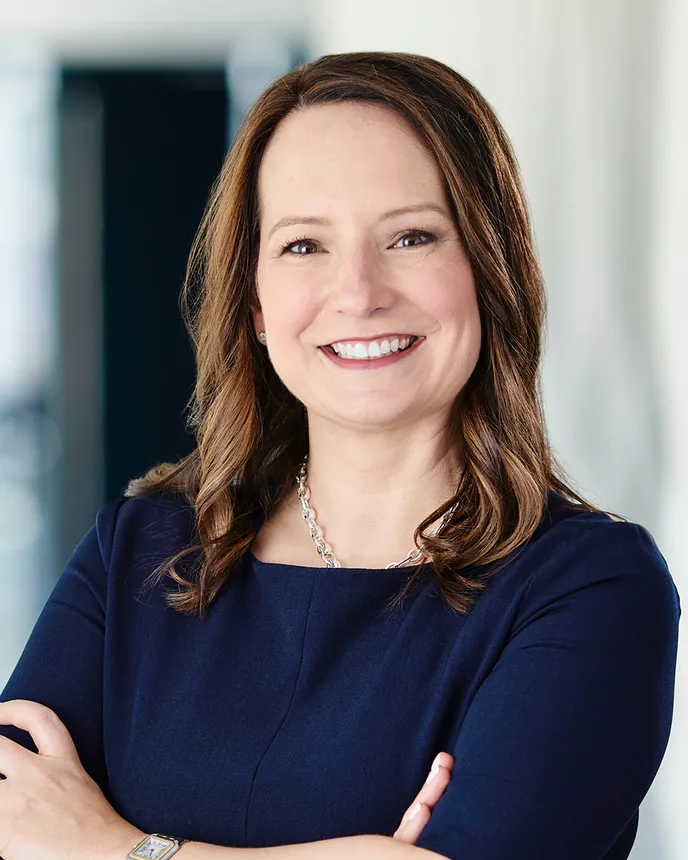This feature is a part of “The Dotted Line” series, which takes an in-depth look at the complex legal landscape of the construction industry. To view the entire series, click here.
With regime change ahead in Washington, many construction pros expect a second Trump administration to pull federal procurement funds away from initiatives that support sustainable building.
Yet even without the formidable force of federal dollars, experts say demand for more environmentally conscious construction isn’t going anywhere — so builders need to be equipped to handle sustainability clauses in their contracts.
As extreme weather exacts an increasingly expensive toll on the built environment, there’s a growing push from private clients, as well as state and local governments, to shift to more sustainable construction, said Mandy MacVey, partner at Washington, D.C.-based law firm Venable, where she specializes in construction disputes.
“You have a lot of companies that have made a carbon reduction commitment, and so between city, state and corporate procurement, there’s still critical mass of procurement interest that will not completely vanish as a result of whatever is happening at the federal level,” said MacVey.

Amanda MacVey
Permission granted by Amanda MacVey
The push is global: Multinational contractors must comply with a growing number and variety of sustainability requirements from owners around the world, said attorney Meena Kamath, head of built environment at The Chancery Lane Project. The U.K.-based nonprofit creates free customizable contract language to reduce carbon emissions in a variety of sectors internationally, including U.S. construction.
“Climate risk is business risk,” said Kamath. “So if you’re not protecting your business, particularly a physical business like construction, like real estate, from climate risks and the physical impacts of that, then you’re not protecting your business, full stop.”
With the potential for less federal regulation, there will likely be an increased focus on, among other things, private agreements and contracts, said Nicole DeNamur, lawyer and founder of Seattle-based Climate Aligned Law.
“I think contracts are going to play an increasing role in driving sustainability,” said DeNamur. “The market, generally speaking, is going to continue to demand more environmentally conscious spaces and practices.”
What should builders expect?
Sustainability provisions in construction contracts can address a wide range of environmental considerations on projects, according to Kamath.
“Every decision that is made for a building — low-carbon concrete or steel, which supplier to use, what sorts of materials to use, how to transport any goods to your site, where you’re getting them from, how local your suppliers are and your labor is — all of those decisions have a carbon footprint,” Kamath said. “All of those decisions have a contract associated with them.”

Meena Kamath
Permission granted by Meena Kamath
Private owners may want their project to meet a particular green standard, most commonly the U.S. Green Building Council’s LEED ratings. A corporate client might want something more specific — for example, Amazon used concrete with carbon-capture technology in its HQ2 building in Arlington, Virginia.
MacVey said to expect more project reporting, as owner entities — whether it’s a government or a publicly traded company that does work internationally — seek to comply with European Union or California requirements, for example.
Best practices
Builders need to understand relevant sustainability provisions in contracts to evaluate risk and price their work accordingly. For example, in light of ongoing supply chain issues, contractors should ensure they have the right to substitute and a robust change order provision, with the ability to seek cost and schedule changes as necessary, according to MacVey.
“I foresee that there’s at least a chance in the future that [with] certain low-carbon materials, the demand might exceed supply,” MacVey said. “If the technical requirement is trying to use salvaged and recycled materials, they’ll want to make sure that they’ve thought through the warranty. You’re not going to warrant that everything’s like new.”
MacVey said she’s seeing more companies expand their supplier code of conduct, and that’s important for builders to seek out since it can be an easily overlooked attachment or link. GCs should also carefully review measures pertaining to the order of precedence — in other words, if there is an ambiguity or conflict, what takes precedence over what.
“Contractors should definitely be aware of the parts and how these stack up so they feel comfortable and have clarity of how it will be interpreted in the event of something that has a cost and schedule impact,” said MacVey.

Nicole DeNamur
Permission granted by Nicole DeNamur
It’s also important for contracts to address that sustainability technology is improving quickly, and GCs will be working with different tools and materials in the near future, said DeNamur.
“There’s sort of a balance of, how can you acknowledge that because sustainability is changing so rapidly, what’s best practice now is probably not going to be best practice — or the best available product or technology — in the near term,” said DeNamur. “You have to build in some flexibility to accommodate for the reality of working in today’s world.”
Projects aiming for a higher level of environmental sustainability often leverage collaborative delivery methods, which provide more opportunity for discussion between the designers, procurement teams, legal teams and other entities, according to MacVey.
“One of the things that I find exciting is sustainability requires more collaboration and more holistic assessment, and also more fair and equitable risk allocation,” said MacVey.
There are many frameworks and resources to support builders navigating new sustainability waters, said DeNamur. They include the Envision sustainability framework for infrastructure projects and the Contractor’s Commitment to Sustainable Building Practices, an industry guide by and for builders with best practices and tips to get started on greener building.
Reducing the carbon impacts of a project is not a one-size-fits-all endeavor, and she advises having a dialogue with owners early and often about how to approach it.
“In my experience, you cannot underestimate the power of a simple conversation,” DeNamur said.
___________________________________________________
The Dotted Line series is brought to you by AIA Contract Documents®, a recognized leader in design and construction contracts. To learn more about their 250+ contracts, and to access free resources, visit their website here. AIA Contract Documents has no influence over Construction Dive’s coverage within the articles, and content does not reflect the views or opinions of The American Institute of Architects, AIA Contract Documents or its employees.

